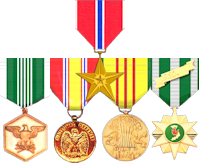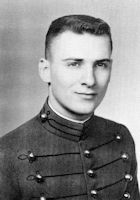COL Paul T. McDonald M.D. USA (Retired)Cullum: 25509 Class: 1965 Cadet Company: L1 Date of Birth: July 21, 1943 Date of Death: April 21, 2021 Died in: Ridgefield, WA Interred: TBD - View or Post a Eulogy |

|
 On
meeting Paul Thomas “Tom” McDonald,
you knew that he was different—special in a way. He was sharply focused
on academics, and, while most cadets were merely trying to get through
the day, he had a long-term goal—but a goal he would not disclose. Tom
had a high aptitude for the service. He was his company’s executive
officer as a firstie, and he excelled in intramural sports.
Nevertheless, he always had time to help his classmates and others with
their studies. Tom was instrumental in keeping some of his classmates
at the Academy, both through academic help and encouragement when times
were tough.
On
meeting Paul Thomas “Tom” McDonald,
you knew that he was different—special in a way. He was sharply focused
on academics, and, while most cadets were merely trying to get through
the day, he had a long-term goal—but a goal he would not disclose. Tom
had a high aptitude for the service. He was his company’s executive
officer as a firstie, and he excelled in intramural sports.
Nevertheless, he always had time to help his classmates and others with
their studies. Tom was instrumental in keeping some of his classmates
at the Academy, both through academic help and encouragement when times
were tough.
Tom also found time for recreation. On Saturday afternoons he could often be found at an informal bridge tournament. It was said that he always walked away with a nice sum of money. Anytime there was a disturbance in the barracks, you could be sure that Tom was one of the instigators.
By Second Class year Tom was solidly in the top section of the class and ready to disclose his objective. His plan was to finish in the top five percent of the class so that the Army would send him to medical school.
Consistent with this plan, he graduated as a distinguished cadet and as a Star Man and was commissioned in the Corps of Engineers. But medical school would have to wait. There was the matter of the Vietnam War to deal with first.
Immediately after graduation Tom married Lois Howard, Ladycliff College Class of 1965. They moved to Fort Campbell, KY, where Tom spent a year in the 326th Engineer Battalion, 101st Airborne Division. He then deployed to Vietnam, where he was the bridge company commander of the 1st Engineer Battalion at Camp Di An.
In February 1968, a classmate stopped at Di An to visit Tom and learned his company was in the field replacing an old Eiffel-style bridge. Since the bridge was on the classmate’s route, he was asked to carry the mail out to Tom’s company. Approaching the bridge, it was clear that an intense firefight was under way. Tom was directing the battle from his command post under the bridge. He turned the battle over to his executive officer, started rummaging through the mail bag, and found a letter from the Personnel Center informing him that he had been approved for medical school. Tom completed his assignment as company commander with flying colors and was reassigned to the 326th Engineer Battalion, his old outfit from Fort Campbell, which had just arrived at Bien Hoa. They needed experienced officers, and Tom was a perfect fit.
Tom started medical school at Cornell University in 1968. By this time, he and Lois had two children, Barbara and Paul. However, the stress of the Vietnam separation and medical school proved too much for the marriage and they divorced.
In 1972 Tom began his residency at Letterman Army Hospital, which was followed by a fellowship at Walter Reed in peripheral vascular surgery in 1977. In 1974 Tom married Carolyn Taylor, an Army nurse also stationed at Letterman. They had two children, Taylor and John.
In 1979 Tom became chief of surgery at Fort Leonard Wood, MO. After board certification in general and vascular surgery in 1980 it was back to Letterman, where as chief of vascular and general surgery and director of the residency program he supervised the education of young doctors. Following retirement from the Army in 1987 in the rank of colonel, Tom moved his family to Oakland, CA, where he was chief of surgery and training at Kaiser Permanente Medical Center, and where he continued to train and develop young physicians. Later Tom was physician in chief at Oakland Medical Center during a time when it was in danger of closing. His foresight and leadership were instrumental in keeping the medical center open and later getting it rebuilt from the ground up, greatly improving the quality and number of the staff. During his eight-year tenure, the number of career physicians grew from 240 to more than 450. Tom was a demanding mentor with a catalog of rules such as “If the meeting starts at noon, you are late at 11:55.” He was also an inventor, with three patents for medical devices that became the basis for a successful business in Silicon Valley. He was a prolific author with numerous professional papers to his credit. At his retirement Tom said that 90 percent of the procedures he performed were not known when he was a resident. He always taught residents they must learn to learn for a lifetime.
Tom retired in 2005 and moved to the Oregon coast, where he enjoyed woodworking, gardening, traveling, fishing, and playing cards. He is remembered as one who relished solving difficult problems. He was a recognized leader in the medical field, and he was a physician who was a paratrooper, an Army Ranger, and an outstanding military leader. He led American soldiers in active combat and more than achieved the goals he set as a cadet. He was awarded the Bronze Star and the Legion of Merit. Tom’s work is done. And we can say, “Well Done, Tom.”
